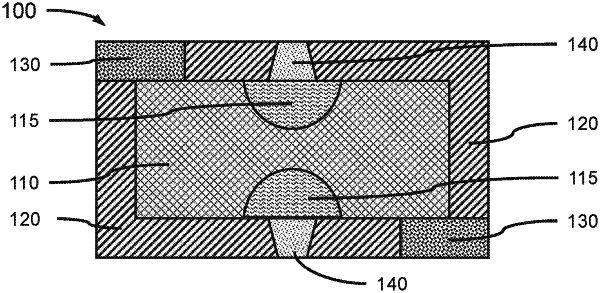| CPC H10N 70/861 (2023.02) [H10N 70/011 (2023.02); H10N 70/231 (2023.02); H10N 70/253 (2023.02); H10N 70/823 (2023.02); H10N 70/826 (2023.02); H10N 70/8413 (2023.02); H10N 70/883 (2023.02); H10N 70/8828 (2023.02)] | 18 Claims |

|
1. A phase change memory device, comprising:
a phase change memory material within an electrically insulating wall, wherein the phase change memory material is configured to store multiple data bits;
a first heater terminal in the electrically insulating wall, wherein the first heater terminal is configured to control the relative volumes of an amorphous phase and a crystalline phase of the phase change memory material in an electrical read path;
a first read terminal and a second read terminal, each having a topmost surface and a bottommost surface, in the electrically insulating wall configured to form the electrical read path between the two read terminals that crosses the first heater terminal, wherein the topmost surface and the bottommost surface of the first read terminal are horizontally aligned with a topmost surface and a bottommost surface of the first heater terminal, respectively, and wherein the first and second read terminals have a substantially consistent width from the topmost surfaces to the bottommost surfaces; and
a second heater terminal in the electrically insulating wall, wherein the second heater terminal is separated from the first heater terminal by a thickness of the phase change memory material, and wherein the topmost surface and the bottommost surface of the second read terminal are horizontally aligned with a topmost surface and a bottommost surface of the second heater terminal, respectively.
|